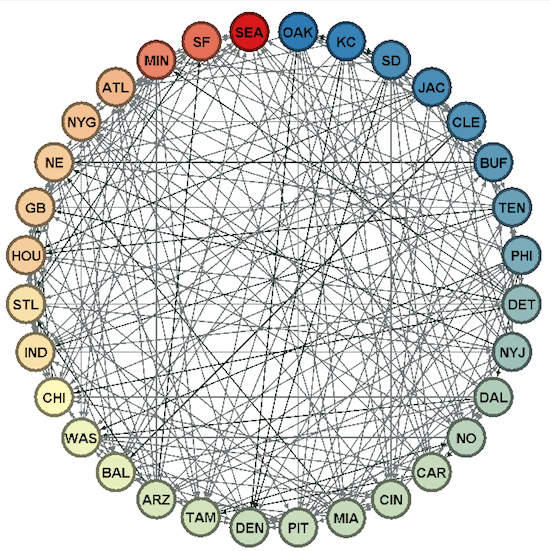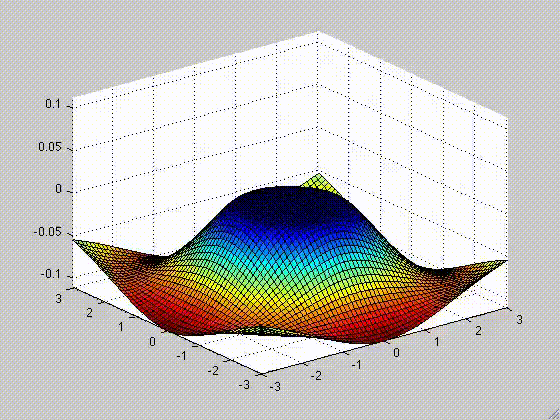Student Projects
A 25 byte message (red) is compressed to 9 bytes (blue), and then 4 bytes (green) are added for error correction. After corrupting 2 bytes (pink), the message is still decoded correctly.
Improving Efficiency and ReliabIlIty of Twitter Data
with Daniel Ayasse
We created a custom variable-length Huffman code for archiving tweets by encoding the most common characters, words, and emojis with fewer bits than less common ones. After adding a Reed-Solomon error correction scheme to improve reliability, we were still able to reduce the average file size by 46.5%.
A visual demonstration that a 5 x 5 torus grid has a cop number of 3.
Cops and robbers on Graphs
with Daytona Davis
We explored a pursuit game on graphs in which a robber moves from a vertex to an adjacent vertex trying to evade capture by n cops moving along the graph in the same way. The main goal is to determine the cop number for a given graph, or the smallest value of n that would guarantee the capture of the robber. For example, we were able to prove that the cop number of an arbitrarily large torus grid (or Cartesian product of cycles) is 3.
The Win-Loss graph for the 2012 NFL season with teams arranged in order of their rankings.
EigenVEctor Ranking in Sports
with Brittany Street
Using a combination of Linear Algebra and Graph Theory, we explored algorithms for ranking sports teams, including the Colley, Massey, and Keener methods, among others. We combined several methods together with the goal of using our rankings to predict the outcomes of NFL games. When we applied our method to 11 seasons of data, we were able to correctly predict the winners of 63.7% of games.
An observer far away from the center would see no disturbance in the wave passing around it, theoretically rendering the center undetectable.
The Finite Difference Method with Applications to Cloaking
with Li Zhang
We applied numerical methods to visualize solutions of a modified Helmholtz equation modeling electromagnetic waves passing through a theoretical inhomogeneous medium designed specifically to bend the waves around the center without changing the observed boundary values. Since the values on the boundary remain identical to solutions of the unmodified Helmholtz equation, an outside observer would have no way of knowing the waves had been bent, leaving the center area undetectable.




